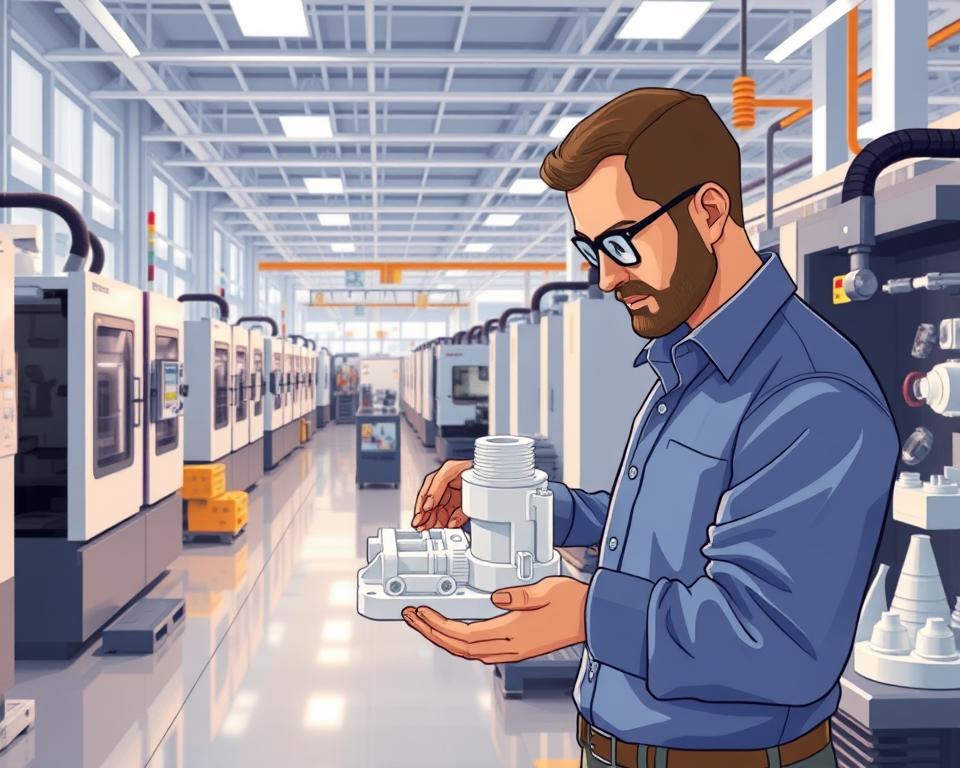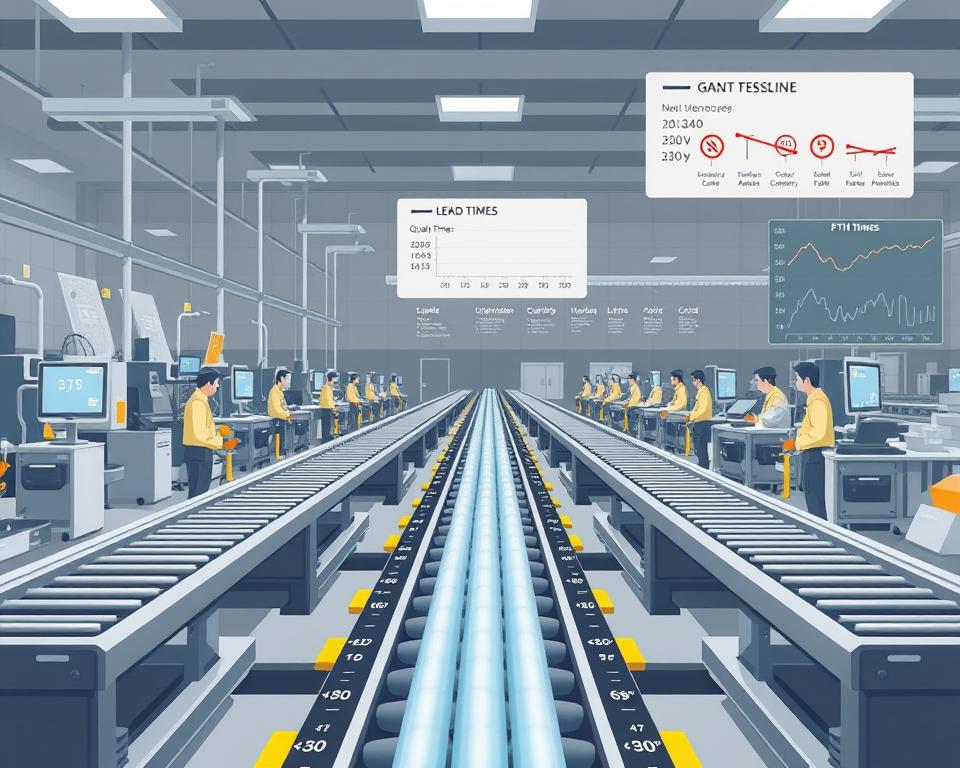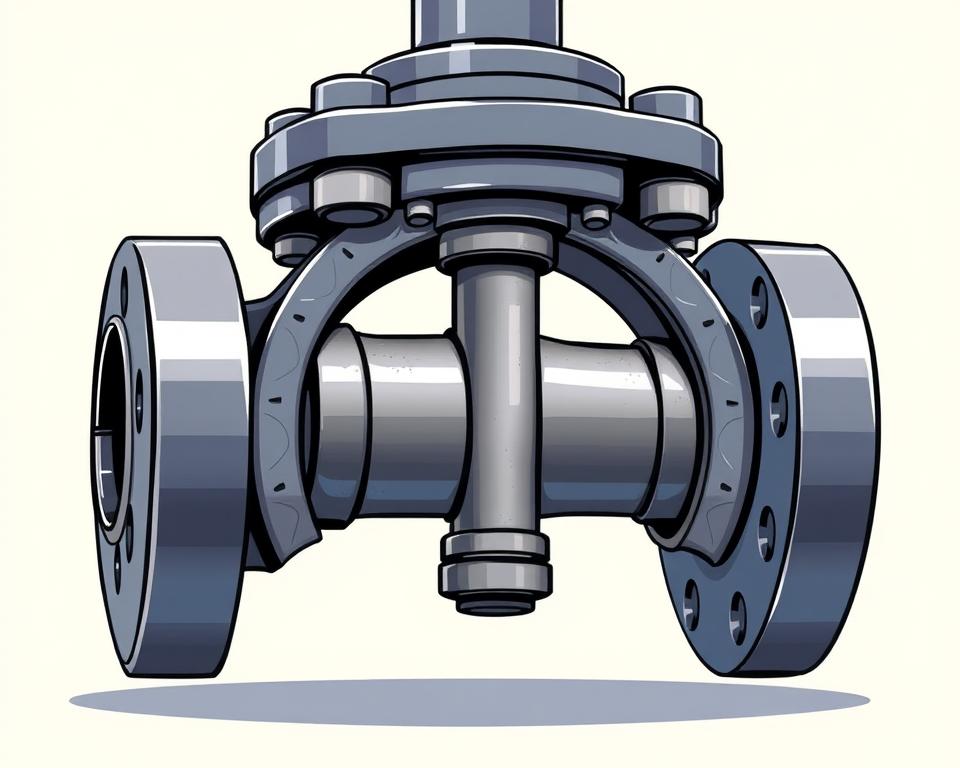Your Sustainable Precious Metal Recycling Guide
More than $60 billion in precious metals end up in e-waste every year—did you realize that? Such a massive amount highlights why precious metal recycling is so vital. Recycling these metals benefits both the economy and the planet. Reclaiming gold, silver, platinum, and palladium helps lower pollution and preserve what’s left of our natural resources.
Companies like Dongsheng Metal Trading are leading the charge towards sustainability. They ensure these valuable metals are reused, not dumped in landfills. This precious metal recycler approach is key to eco-friendly recycling and sustainable practices.
Core Findings
- Over $60 billion in precious metals is disposed of in electronic waste annually.
- Precious metal recycling reduces environmental impact and conserves resources.
- Gold, silver, platinum, and palladium top the list of valuable metals.
- Green recycling methods are essential for a sustainable future.
- Companies like Dongsheng Metal Trading specialize in metal recycling.
What Makes Precious Metals So Valuable
Rare metallic elements known as precious metals attract both investors and manufacturers. Examples include gold, silver, platinum, and palladium, each prized for special traits. They offer conductivity, resist corrosion, and occur in limited supply. Given the resource-intensive mining and processing, recycling precious metals is essential.

The value of precious metals is influenced by market demand and the inherent qualities of each metal. Metal recycling ensures the supply chain remains robust. It also reduces environmental impacts associated with mining activities. Through exhaustive recycling processes, these metals can be restored to their original state. This preserves finite resources while yielding economic benefits.
Precious Metals Explained
Precious metals possess unique characteristics that make them desirable for a variety of applications. Scarcity plus special properties drive their economic importance. Key examples include:
- Au: Valued for its beauty and resistance to tarnish.
- Silver: Celebrated for its adaptability and conductivity.
- Pt: Celebrated for its durability and catalytic properties.
- Pd: Increasingly popular in automotive and electronic applications.
Why Recycle Precious Metals?
Recycling these metals is now key to sustainable practices. It saves scarce materials and sharply cuts mining’s eco-footprint. Consider these advantages:
- Cutting down mining-related environmental harm.
- Lower energy consumption compared to extracting new metals from the earth.
- Feeding materials back into the production loop.
- Potential for financial gains through the reclaiming of high-value materials.
Impact of Recycling Precious Metals
Recovering metals delivers big eco and financial wins. Emphasizing benefits helps cut environmental harm. Plus, it spurs economic development and steadiness.
Green Benefits
Green gains from metal recycling are huge. When we recover metals from e-waste and scrap, landfill volume drops. That cuts new mining needs and saves resources.
It curtails mining’s damage, like habitat loss and toxins. Focusing on recycling precious metals helps us strive for a more sustainable future.
Financial Gains
Economic upsides of recycling stand out equally. Recycling precious metals can lower manufacturing costs. It lets businesses choose reclaimed over freshly mined metals.
It spawns jobs in recovery plants and steadies markets as recycled-metal demand rises. Using these financial benefits, companies can improve profits. They also contribute to a greener economy.
How Precious Metals are Recycled
Metal recycling demands a multi-stage process to optimize recovery. It starts with collecting metals from various sources like discarded electronics, jewelry, and industrial scraps. These materials then undergo sorting, cleaning, and analysis to determine their composition and value.
Recycling Workflow
Such a methodical process ensures efficient recovery. Every phase aims to maximize precious-metal returns. Metals are sorted according to their type and purity. Cleaning removes contaminants that could hinder recovery. Testing measures metal content to select proper recycling methods.
Recycling Techniques Used
Advanced recycling techniques are employed to achieve high metal recovery rates. Thermal reduction applies intense heat to isolate metals. Molten refining and wet-chemistry steps handle finer separations. Companies like Dongsheng Metal Trading use these methods to boost efficiency and maximize returns in the precious metal recycling process.
Which Precious Metals Are Recyclable
Recovery efforts support both ecology and resource reclamation. A host of precious metals are recyclable, aiding markets and ecosystems. Awareness of recyclable metals guides consumers and companies.
Gold, Silver, and Platinum
Familiar precious metals include gold, silver, and platinum. You’ll see them in rings, currency, and industrial parts. Gold’s high price and use make it a prime recycling target. Silver’s role in cameras, electronics, and solar energy makes its recycling vital.
Platinum, while rarer, finds value in catalytic converters.
Rare Metals in Electronics
E-waste metals present special recovery opportunities. Smartphones, laptops, and tablets contain rare metals like palladium and indium. Reclaiming them cuts e-waste and recovers key resources.
Recycling these electronics metals is imperative. Industries aim to minimize waste and efficiently recycle resources.
Industries that Benefit from Precious Metal Recycling
Recycling precious metals supports industries by providing efficient, green resource supply. Device manufacturing in electronics profits hugely from recovered metals. Aerospace and medical sectors also depend on these metals for critical components. Examining industry recovery uncovers eco- and economic advantages.
Electronics Industry
Electronics spearheads recovery, given the metal content in phones and PCs. Rapid technological advancements have led to a significant increase in electronic waste. Hence, recovering metals like gold, silver, and palladium is crucial. It not only conserves natural resources but also reduces mining-related carbon emissions.
Businesses enhance recovery to align with green and zero-waste aims. This shift supports the ongoing need for resource conservation and environmental protection.
Aerospace and Medical Equipment
Recycling precious metals matters for aerospace and healthcare, given their reliance on them. Durable, corrosion-resistant alloys are used in aircraft and medical tools. Recycling these metals can significantly lower material costs and comply with environmental regulations.
These sectors know green recovery eases resource shortages. And it improves operations, making metal recycling a smart green tactic.
Finding Precious Metal Recycling Companies
Finding trustworthy precious metal recycling companies is key to recycling effectively. It’s wise to ask important questions to understand their operations. Their fees and techniques will shape your outcome. By comparing services, you can see what each company offers and make a smart choice.
Questions to Ask Recycling Companies
- What certifications do you hold regarding precious metal recovery?
- How do you process various precious metals?
- Which recovery percentages do you achieve for each metal?
- What is your pricing structure and are there extra charges?
- Do you have client testimonials or references?
Comparing Prices and Services
Comparing recyclers’ offerings is crucial when choosing one. Use a table to line up these factors:
| Company Name | Recovery Rate (%) | Processing Fee ($) | Turnaround Time (Days) |
|---|---|---|---|
| Recycling Co. A | 95 | 50 | 7 |
| Recycling Co. B | 90 | 45 | 5 |
| Recycling Co. C | 92 | 55 | 10 |
Side-by-side comparisons help pinpoint the ideal recycler. That way, you maximize returns and maintain quality.
Your Metal Recycling Handbook
Grasping recycler workflows is essential for metal recovery. These experts manage the entire process, from collection to processing. Such management secures peak resource use and profit.
Behind the Scenes of Recycling
Advanced workflows—assay, separation, smelting—unlock metal value. Collection comes from devices, jewelry, and industrial waste. Then, they use sophisticated techniques to separate different metals. In the last stage, precious metals are refined to purity.
This process not only maximizes resource recovery but also supports eco-friendly practices. It’s essential for long-term sustainability.
Finding Your Perfect Recycling Partner
You’ll want to weigh several factors in your choice. Begin by checking their green credentials. In today’s market, a commitment to sustainability is essential. Next, review their service range—from pickup to refining.
Pricing is another key factor. Request estimates from multiple firms. Firms such as Dongsheng Metal Trading tailor services to each sector. They are a reliable choice for specific recycling needs.
The Role of Metal Recycling Facilities
Recycling centers play a key role in sustainability and waste control. Multiple types of facilities handle various recycling demands. Understanding these facilities improves access to recyclers and their services. That supports firms and ecosystems alike.
Facility Categories
Metal recycling facilities vary widely in their operations. Some yards recover gold and silver; others accept all metal waste. Common examples include:
- Metal Scrap Yards: Typically focus on general metal waste, including ferrous and non-ferrous metals.
- Precious Metal Recovery Companies: With a focus on high-value materials such as gold, silver, and platinum, these companies offer refined processing techniques.
- Electronics recyclers extract metals from old gadgets.
Location and Access to Facilities
Easy access to facilities boosts recovery efficiency. Businesses must consider the logistics of transporting materials. Key access factors include:
| Factor | Description |
|---|---|
| Distance | Facilities located nearer to businesses minimize transportation costs and time. |
| Partnerships | Having established relationships with local recyclers can enhance efficiency in recycling processes. |
| Service Range | Awareness of service menus aids in picking the right center. |
Ultimately, facility type and access shape recycling success.
E-Waste Recycling & Metal Recovery
Electronic waste is a pressing issue in today’s world, causing environmental harm. Discarded devices often contain precious metals that can be recovered through recycling. This highlights the importance of seeing e-waste as a valuable resource.
Electronic Precious Metals
Devices often contain bits of gold, silver, and palladium. These metals are found in various parts:
- Circuit boards
- Connectors and ports
- Capacitors and resistors
- Battery terminals
From phones to TVs, electronics pack precious metals. By recycling, we retrieve and reuse these valuable elements.
E-Waste Recovery Benefits
E-waste recycling is vital for both environmental protection and resource recovery. It trims dump loads and conserves raw materials. The benefits of recycling e-waste metals are clear:
- It cuts ecological hazards from poor e-waste handling
- It curbs carbon footprints with sustainable recycling
- It supports the circular economy by recycling materials back into production
Championing electronics recycling fosters responsible resource use. It secures a healthier planet for tomorrow’s children.
What’s Next in Metal Recycling?
The field of precious metal recycling is undergoing a transformation, driven by technological progress and a surge in sustainability efforts. With resource conservation rising, recyclers are innovating. By integrating novel processes, they pave the way forward.
Green Recycling Trends
Today’s sustainable recycling prioritizes waste reduction and low impact. Companies are shifting towards eco-friendly practices, like using biodegradable packaging and energy-efficient processes. Such moves match worldwide green goals and nudge industries to be more eco-responsible.
Cutting-Edge Recovery Methods
Breakthroughs in recovery boost metal recycling yields. Robotic sorting and chemical extraction raise recovery. These innovations not only increase resource extraction but also reduce environmental impact, marking a significant step forward in recycling precious metals.
How to Start Your Own Precious Metal Recycling Business
Starting a precious metal recycling business demands meticulous planning and a deep grasp of operational and market dynamics. Founders need a roadmap, regulatory know-how, and solid groundwork. This includes conducting extensive market research and identifying target clients. Permits and regulatory clarity underpin ongoing success.
Launching Steps
Setting up a precious metal recycling venture requires several essential steps:
- Analyze market demand and competitor landscape.
- Develop a detailed business plan outlining goals and strategies.
- Invest in equipment tailored to your process needs.
- Raise startup funds through financing or investors.
- Secure regulatory approvals and certifications.
- Implement a marketing strategy to draw in customers.
Regulatory & Certification Needs
Grasping legal frameworks is essential for your recycling venture. Meeting environmental rules protects your operation and the planet. Key considerations include:
- Getting licensed by appropriate agencies.
- Following all levels of waste and recycling regulations.
- Certifying employee knowledge of safety and handling rules.
Final Thoughts
Precious metal recycling is essential for preserving natural resources and improving environmental health. It allows individuals and businesses to lessen waste’s impact on our planet. Recovered metals curb mining and fuel green-job growth in recycling.
Recycling goes beyond environmental benefits, also providing economic advantages. Working with Dongsheng Metal Trading guarantees green standards. This collaboration strengthens the circular economy, benefiting both recyclers and consumers.
Our path to sustainability relies on united metal recovery initiatives. Raising awareness fosters mindful use and eco stewardship. Adopting these practices will benefit us now and secure a greener future for generations to come.


